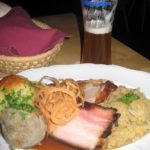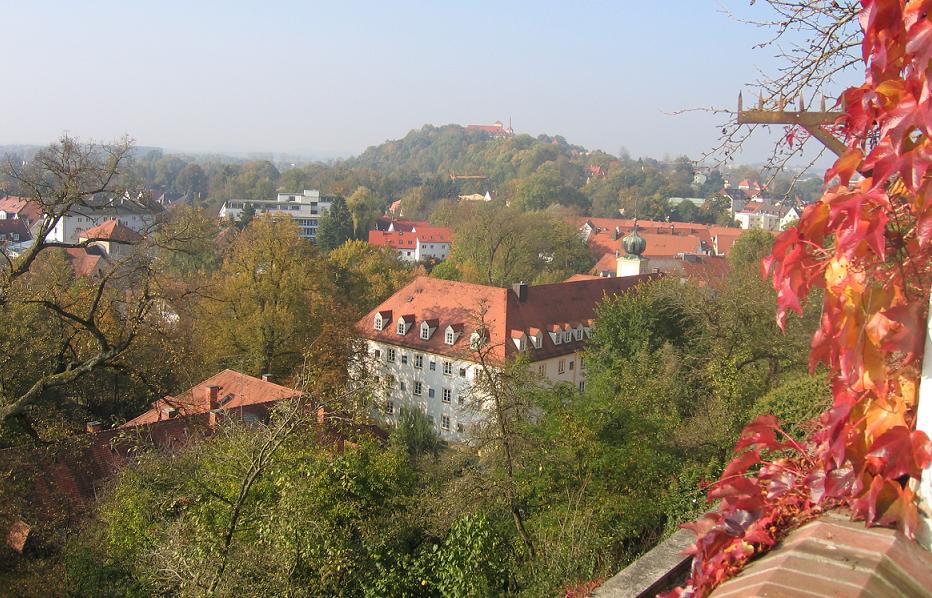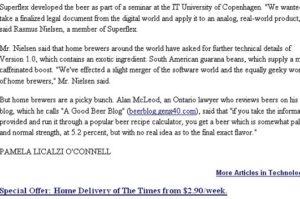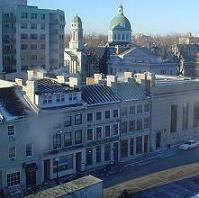Freising, Bavaria, Germany. A quiet little town dozing on a crisp Sunday morning, an excellent place for a stroll – and a few beers. Why Freising? For a beer lover, it has the obvious advantage of being the home of Weihenstephan, which claims to be the oldest brewery in the world, and that obviously makes it stand out from other Bavarian towns. Combine this with it being just off the runway of Munich international airport, and it really makes sense. So, if you have a few hours in transit, go straight for the arrivals hall and look for the sign pointing you to buses. Bus 635 takes you to the Freising railway station in 20 minutes, and it runs all day.
 First a stroll through the largely empty streets. The cathedral dominates the highest hill, with views of the rural landscape surrounding you like those shown above. Click for a bigger version of the view. There is surprisingly little noise from the airport, more some from the church bells. Downhill again, zigzagging through the old town with picturesque homes and shops that look pricey, but, this being Germany, they are all closed on Sunday. I enter the main square, and the sun is warm enough to stop at a café with tables outside and where the sign tell me I can have a glass of Franziskaner Weisse. The waiter promptly bring me this, and I sip my beer enjoying the Sunday quietness. The beer, an unfiltered hefe, is a proper representative of its kind, no doubt about that, and it tastes good. Still, it lacks some bitterness and freshness that I seem to recall from the bottled version. It is one of Roger Protz 300 beers, but I don’t know if it deserves such a rating. There is a church next to the main square, with the sounds of music from the organ and the congregation singing their hymns drifting out to me and a few other customers not attending the service. (I believe there are others inside the café having brunch, too.) A plaque on the church wall commemorates the heroes of Freising from World War I. (Well, Norway was neutral in WWI, so we don’t have much to boast about!) I fish out my book (the new one by PD James, bought on the airport that morning), and order a Spaten Helles, also in the Protz book. I go for a small one, as I feel I should have some lunch soon. This beer is not a beer to die for, a rather flat and boring brew. It may be the victim of the 7 minute law, so I will try the bottled version if the occasion arises.
First a stroll through the largely empty streets. The cathedral dominates the highest hill, with views of the rural landscape surrounding you like those shown above. Click for a bigger version of the view. There is surprisingly little noise from the airport, more some from the church bells. Downhill again, zigzagging through the old town with picturesque homes and shops that look pricey, but, this being Germany, they are all closed on Sunday. I enter the main square, and the sun is warm enough to stop at a café with tables outside and where the sign tell me I can have a glass of Franziskaner Weisse. The waiter promptly bring me this, and I sip my beer enjoying the Sunday quietness. The beer, an unfiltered hefe, is a proper representative of its kind, no doubt about that, and it tastes good. Still, it lacks some bitterness and freshness that I seem to recall from the bottled version. It is one of Roger Protz 300 beers, but I don’t know if it deserves such a rating. There is a church next to the main square, with the sounds of music from the organ and the congregation singing their hymns drifting out to me and a few other customers not attending the service. (I believe there are others inside the café having brunch, too.) A plaque on the church wall commemorates the heroes of Freising from World War I. (Well, Norway was neutral in WWI, so we don’t have much to boast about!) I fish out my book (the new one by PD James, bought on the airport that morning), and order a Spaten Helles, also in the Protz book. I go for a small one, as I feel I should have some lunch soon. This beer is not a beer to die for, a rather flat and boring brew. It may be the victim of the 7 minute law, so I will try the bottled version if the occasion arises.
 I ask for the bill (amazingly I’ve managed to get by using my rusty school German), and aim for the Weihestephan brewery, which is well signposted. This is a brisk walk uphill again, past a beer garden closed down for the winter and through parts of Weihestephan Technical College – the brewery is a part of this complex. On a Sunday, the brewery is closed, but I aim for the brewery tap, which is bustling at lunchtime. I find a seat in a vaulted cellar, and order a Hefe Weisse, which is much better than the one I had earlier. Properly served, and nice to sip while I study the old fashioned menu, heavy on roasted dishes. I go for the Brewer’s Plate, which include sauerkraut, roast pork, smoked pork, potato dumplings, liver dumplings and deep fried onion rings. With beer gravy. I finish with a draft pils, which is the best beer of the day. A very aromatic beer, as far removed from Becks and its clones as possible. Lots of taste from both the malt and the hops. Lovely.
I ask for the bill (amazingly I’ve managed to get by using my rusty school German), and aim for the Weihestephan brewery, which is well signposted. This is a brisk walk uphill again, past a beer garden closed down for the winter and through parts of Weihestephan Technical College – the brewery is a part of this complex. On a Sunday, the brewery is closed, but I aim for the brewery tap, which is bustling at lunchtime. I find a seat in a vaulted cellar, and order a Hefe Weisse, which is much better than the one I had earlier. Properly served, and nice to sip while I study the old fashioned menu, heavy on roasted dishes. I go for the Brewer’s Plate, which include sauerkraut, roast pork, smoked pork, potato dumplings, liver dumplings and deep fried onion rings. With beer gravy. I finish with a draft pils, which is the best beer of the day. A very aromatic beer, as far removed from Becks and its clones as possible. Lots of taste from both the malt and the hops. Lovely.
I have to get back, but not before buying a souvenir pack of 6 of their beers to take home. I even bought a bottle of beer liquor especially made for the restaurant. Have your tasted it, sir, enquires the barman when I ask for it. I tell him no, and he kindly pours me a shot. It does not taste of beer at all – a very sweet drink which reminds me of a coffee liquor. But now I have to hurry. A 15 minute walk back to the station, hop on the bus – and I am soon back in the crowd of Flughafen Franz-Josef-Strauss again. I doze off as soon as I sit down in my airplane seat.
Next stop: Bratislava




